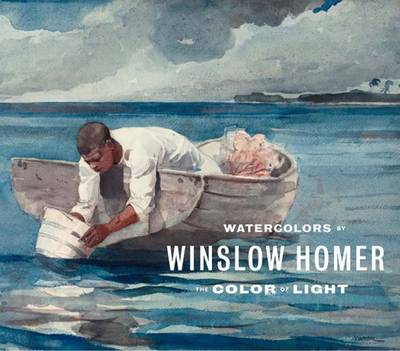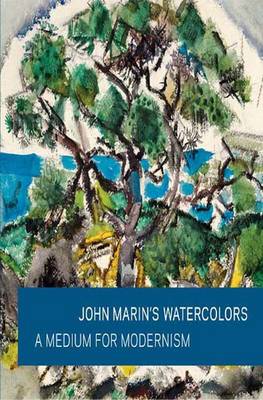Art Institute of Chicago
2 total works
American painter Winslow Homer (1836-1910) created some of the most breathtaking and influential watercolours in the history of the medium. This handsome volume provides a comprehensive look at Homer's technical and artistic practice as a watercolourist, and at the experiences that shaped his remarkable development. Focusing on 25 rarely seen watercolours from the Art Institute's collection, along with 75 other related watercolours, gouaches, drawings, and paintings - including many of the artist's characteristic subjects - this book proposes a new understanding of Homer's techniques as they evolved over his career.Accessibly written essays consider each of the featured works in detail, examining the relationship between monochrome drawing and watercolour and the artist's lifelong interest in new optical and colour theories. In particular, they show how his sojourn in England, where he encountered leading British marine watercolourists and the dynamic avant-garde art scene, precipitated an abrupt change in technique and subject matter upon his return home.
Conservators address the fragility of these watercolours, which are prone to fading due to light exposure, and demonstrate, through pioneering research on Homer's pigments and computer-assisted imaging, how the works have changed over time. Several of Homer's greatest watercolours are digitally 'restored', providing an exhilarating glimpse of the original impact of Homer's groundbreaking colour experiments.
Conservators address the fragility of these watercolours, which are prone to fading due to light exposure, and demonstrate, through pioneering research on Homer's pigments and computer-assisted imaging, how the works have changed over time. Several of Homer's greatest watercolours are digitally 'restored', providing an exhilarating glimpse of the original impact of Homer's groundbreaking colour experiments.
American modernist John Marin (1870-1953) worked prolifically in watercolor, etching, and oil during a career that spanned more than 50 years. It was the medium of watercolor, however, that encouraged him in his development of a bold, original style that is both contemporary and authentically American. Marin's improvisational approach to color, paint handling, perspective, and movement situated him as a leading figure in modern art and helped influence the Abstract Expressionist movement. John Marin's Watercolors is the first book to present the Art Institute of Chicago's impressive collection of his works in its entirety, ranging from early images rooted in traditional practice to more experimental compositions. It explores the artist's working method, his modernist vision as it developed through etching and into watercolor, and his intuitive investigation of the inherent properties of his watercolor to craft a new, avant-garde methodology. The works are organized chronologically and grouped according to the sites where they were painted, including New York City, France and the Tyrol, the Maine coastline, and the New Mexico desert.
Marin had a strong regard for the presentation of his watercolors, and a section illuminates how he chose frames and mounts for each work. The Art Institute's significant collection of Marin's original frames and mounts were bequeathed to the museum, along with some 50 watercolors, by legendary photographer, dealer, and collector Alfred Stieglitz. Marin's and Stieglitz's attitudes toward presentation are discussed, and the frames are documented with photographic and written descriptions.
Marin had a strong regard for the presentation of his watercolors, and a section illuminates how he chose frames and mounts for each work. The Art Institute's significant collection of Marin's original frames and mounts were bequeathed to the museum, along with some 50 watercolors, by legendary photographer, dealer, and collector Alfred Stieglitz. Marin's and Stieglitz's attitudes toward presentation are discussed, and the frames are documented with photographic and written descriptions.

